Chops: Intermediate
Theory: Intermediate
Lesson Overview:
• Learn how to imply chord changes over a 12-bar blues.
• Understand how to use the super Locrian scale.
• Develop an appreciation for slash chords.
Click here to download a printable PDF of this lesson's notation.
A good barometer of a guitarist’s musicality is the way he plays the blues. His influences and musical vocabulary are all exposed when you hear him solo over some 12-bar changes. The way he substitutes chords and scales reflects his ability to comprehend and infuse other musical possibilities and styles. In this lesson, we will look at 10 essential phrases that you can intertwine into your current vocabulary for the next blues jam session. In order to keep things easy to understand, all the examples are in the key of G—but make sure to learn how to visualize patterns and transpose them to other keys.
One of the first scales a guitarist learns is the minor pentatonic (1–b3–4–5–b7). It’s nearly impossible to develop an authentic-sounding blues vocabulary without becoming very familiar with this scale. Check out the fingering in Fig. 1. Learn it. Love it.
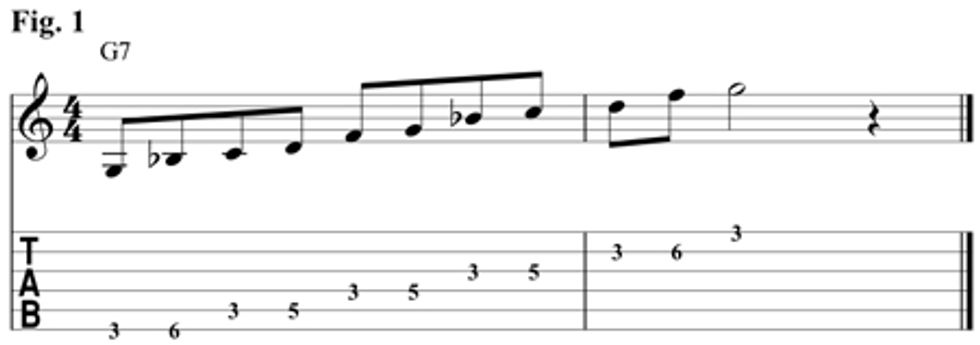
The two most common bends in the minor pentatonic scale start on the 4 (going to the b5 or “blue note”) and the b7 (bending up to the root). In Fig. 2 you can see a short phrase that can be used over measures five through eight in a typical blues progression.

The great Michael Bloomfield was one of the first guitarists I heard to bend the 5th degree of the scale (D) up to the sixth (E). The phrase in Fig. 3 starts off with a Bloomfield-approved bend before moving down to a bend that resolves the b3 (Bb) to the natural 3 (B).
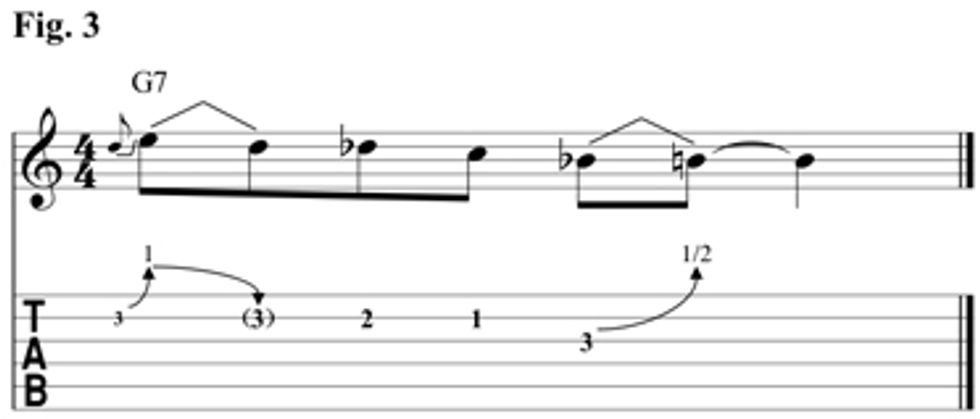
Another Bloomfield trick was using a minor scale over a dominant blues. In measure nine of a typical blues form, you can set up a IIm-V7 sound by using A Dorian (A–B–C–D–E–F#–G) as shown in Fig. 4. We target the b7 and 6 in Fig. 5. Make sure to add a little snap on that quarter-step bend before resolving to the root on beat three.
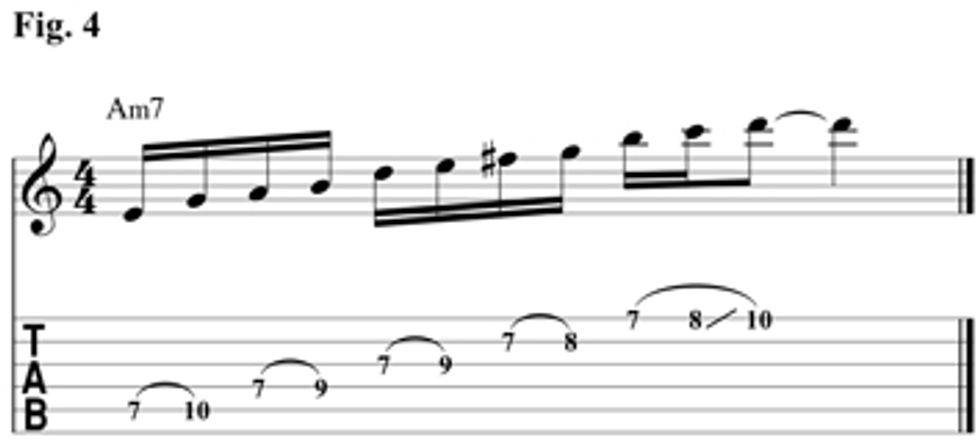
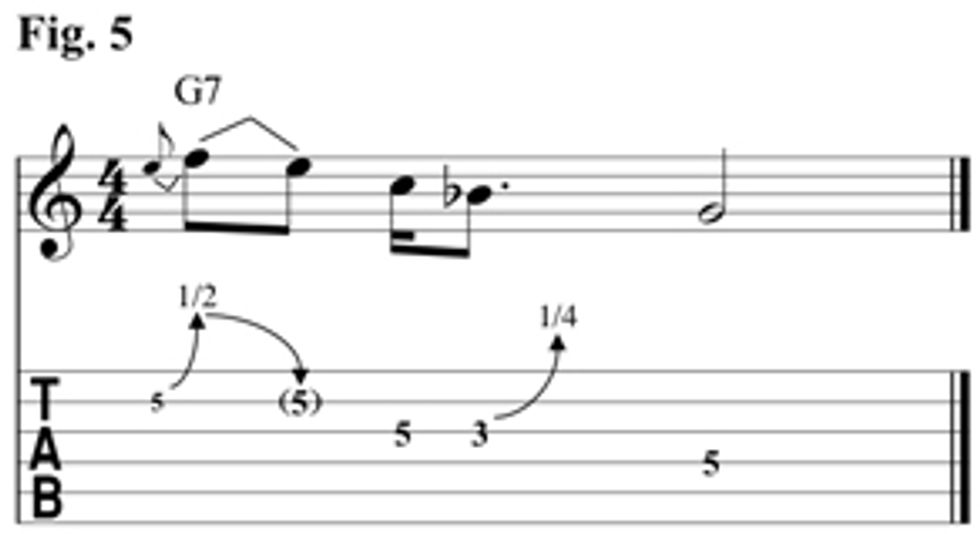
When I was on the road with organist Jack McDuff, he was adamant about using a VI7 chord in the eighth measure of a 12-bar blues. This gives the progression some tension before heading into the final four measures of the form. Not only was the chord a dominant 7, but it was also altered—usually with a #9. Try the phrase in Fig. 6 in measures seven and eight next time you’re faced with an altered-dominant chord.
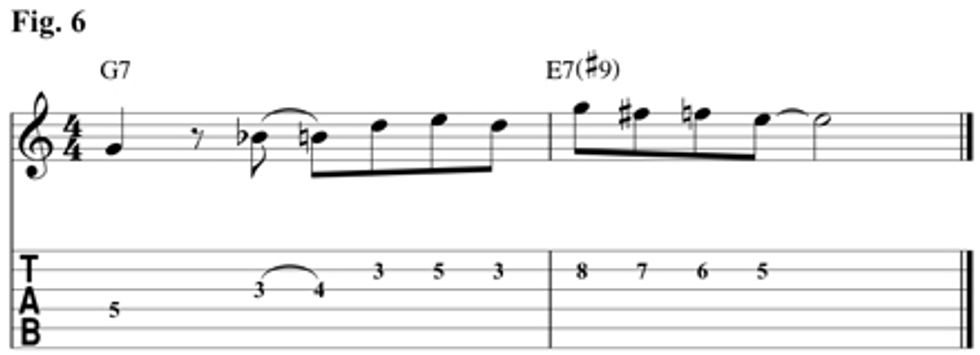
Another scale that works great over an altered VI7 chord is the super Locrian scale (R–b2–b3–b4–b5–b6–b7). There are a few ways to think about this. You can either go by the formula based off the major scale, as shown here, or visualize it as the seventh mode of a melodic minor scale. For our purposes (E7#9), that would be F melodic minor. You can see a quick and easy fingering for this scale in Fig. 7 and a lick that demonstrates this tense sound in Fig. 8. This sound works great over the V7 chords in a minor IIm-V7 progression as well.
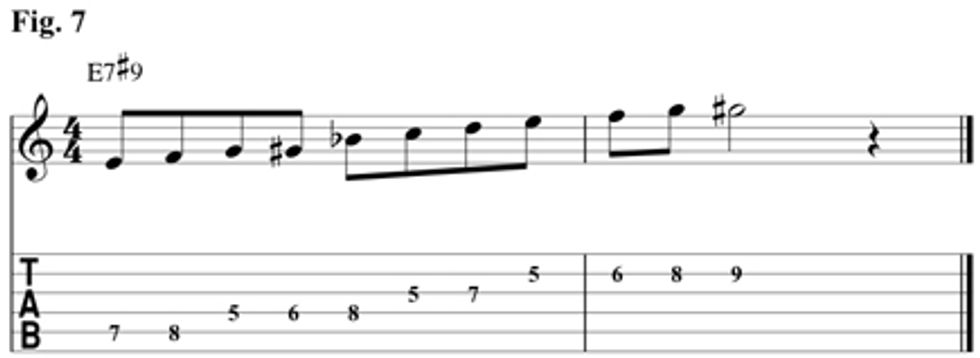
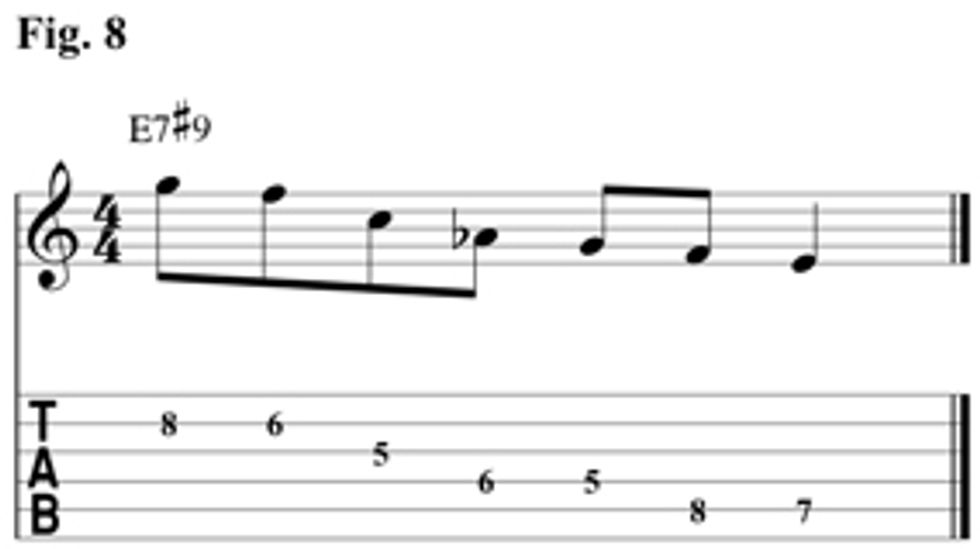
Alto saxophonist Charlie Parker was a master of twisting in and out of chord changes. Many of his original melodies or “heads” are extremely valuable for understanding how he approached blues progressions. In Fig. 9 we can see how he would play over a minor IIm-V7 progression. Plug this into measure eight to really turn some heads and lead into the IIm chord in measure nine.
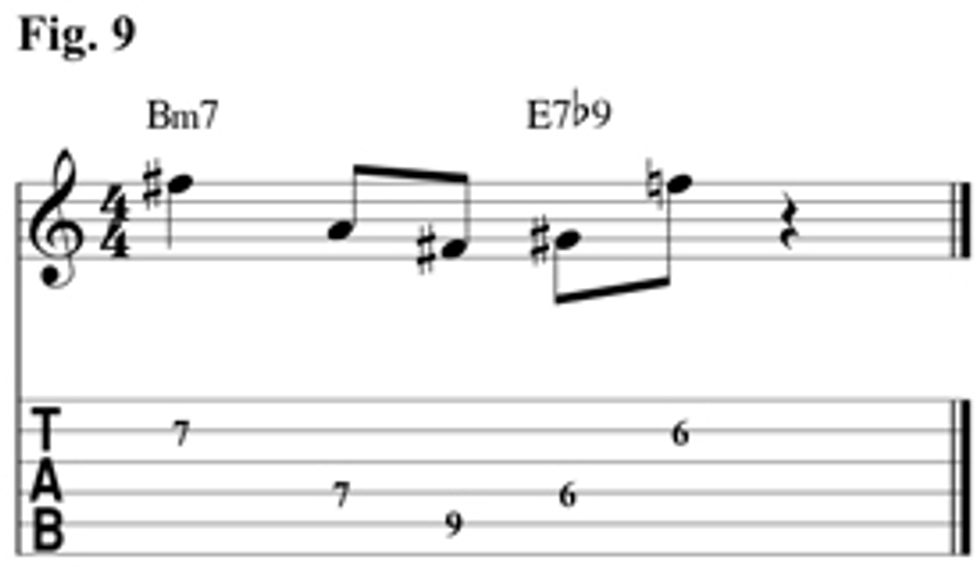
We finally hit the turnaround in Fig. 10. The phrase starts out with the A Dorian mode we looked at earlier before we get to a C/D chord. This type of chord is called a slash chord. A slash chord consists of a basic triad (the left side) along with a bass note (the right side). Our chord here is a C major triad (C–E–G) over a D bass note. This creates a D9sus-type of sound before resolving to G.
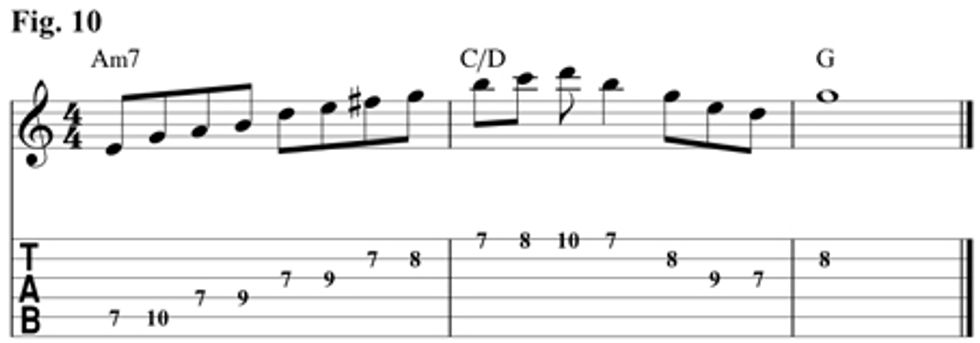
In Fig. 11 we use contrary motion to create a familiar-sounding ending. Contrary motion is when you have two musical lines moving in opposite directions. Check out how the lines split and move away from each other to open up the harmony. Work out the fingerings before tackling this at faster tempos.
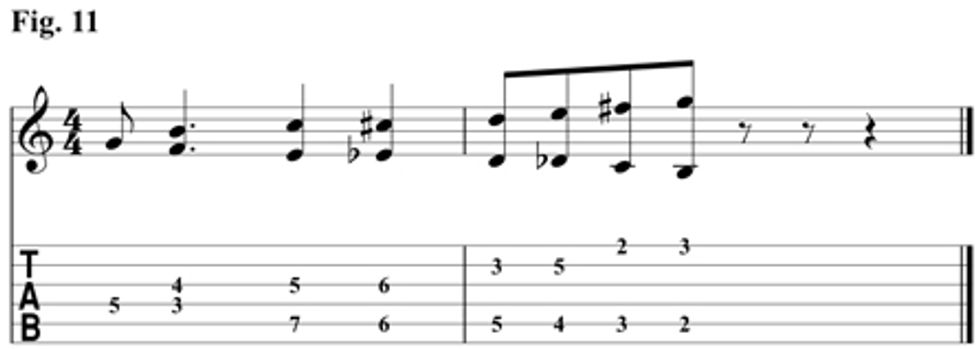
There’s an entire universe of chord, scale, and lick possibilities for a 12-bar blues. You have to keep true to the genre of blues you’re playing (don’t use bebop lines in a Muddy Waters song) but it’s good to have a large musical vocabulary so you can choose your notes and be a more interesting improviser.
Mike Pachelli has performed with many eclectic blues, jazz, and rock musicians including Brother Jack McDuff, Albert King, Michael Sembello, Jeanne Mas, and Phil Keaggy. Pachelli has released 16 albums, authored instructional books and DVDs, and is the recipient of 10 gold/platinum RIAA awards. For more information, visit mikepachelli.com.











![Rig Rundown: Russian Circles’ Mike Sullivan [2025]](https://www.premierguitar.com/media-library/youtube.jpg?id=62303631&width=1245&height=700&quality=70&coordinates=0%2C0%2C0%2C0)













